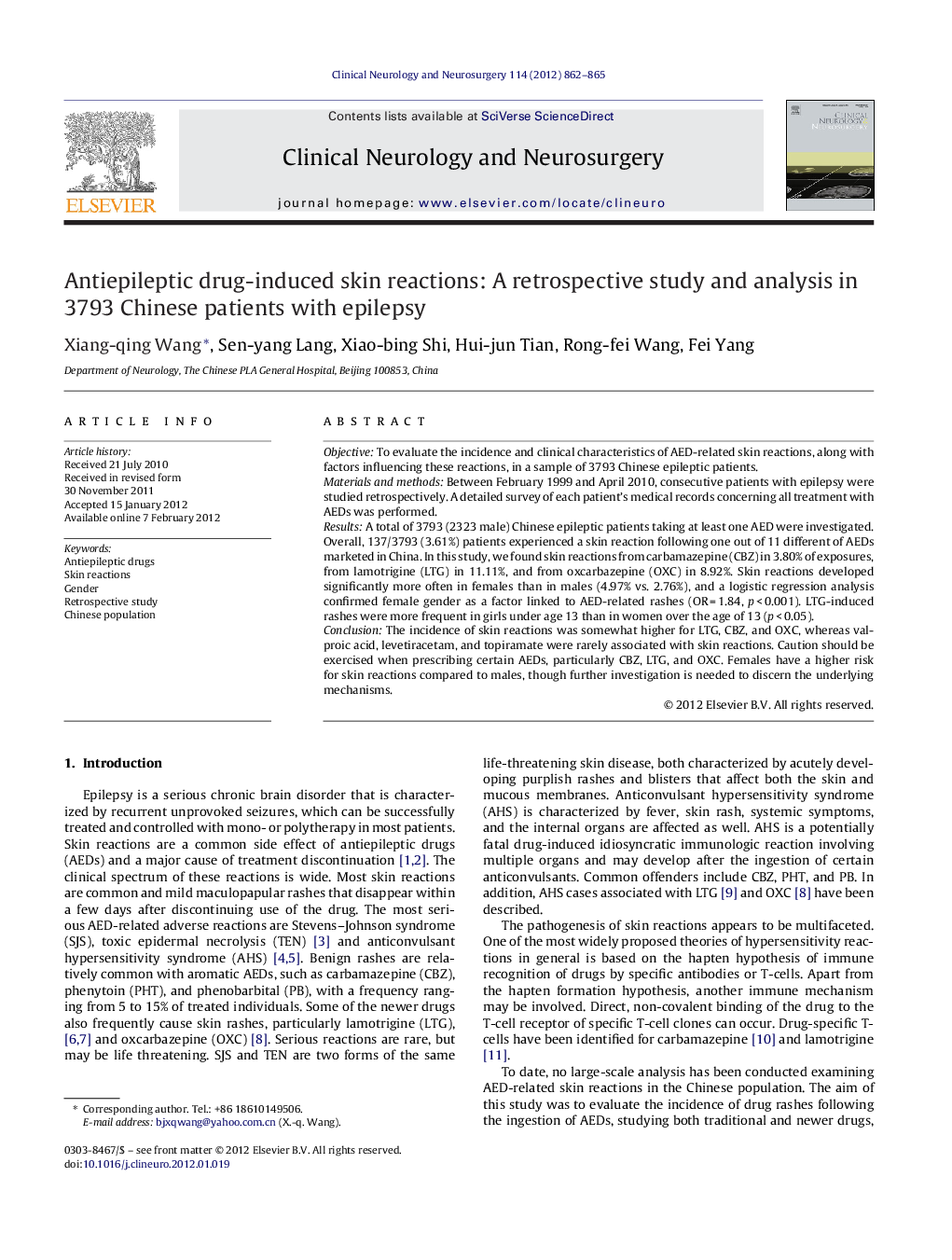| Article ID | Journal | Published Year | Pages | File Type |
|---|---|---|---|---|
| 6006994 | Clinical Neurology and Neurosurgery | 2012 | 4 Pages |
ObjectiveTo evaluate the incidence and clinical characteristics of AED-related skin reactions, along with factors influencing these reactions, in a sample of 3793 Chinese epileptic patients.Materials and methodsBetween February 1999 and April 2010, consecutive patients with epilepsy were studied retrospectively. A detailed survey of each patient's medical records concerning all treatment with AEDs was performed.ResultsA total of 3793 (2323 male) Chinese epileptic patients taking at least one AED were investigated. Overall, 137/3793 (3.61%) patients experienced a skin reaction following one out of 11 different of AEDs marketed in China. In this study, we found skin reactions from carbamazepine (CBZ) in 3.80% of exposures, from lamotrigine (LTG) in 11.11%, and from oxcarbazepine (OXC) in 8.92%. Skin reactions developed significantly more often in females than in males (4.97% vs. 2.76%), and a logistic regression analysis confirmed female gender as a factor linked to AED-related rashes (OR = 1.84, p < 0.001). LTG-induced rashes were more frequent in girls under age 13 than in women over the age of 13 (p < 0.05).ConclusionThe incidence of skin reactions was somewhat higher for LTG, CBZ, and OXC, whereas valproic acid, levetiracetam, and topiramate were rarely associated with skin reactions. Caution should be exercised when prescribing certain AEDs, particularly CBZ, LTG, and OXC. Females have a higher risk for skin reactions compared to males, though further investigation is needed to discern the underlying mechanisms.
